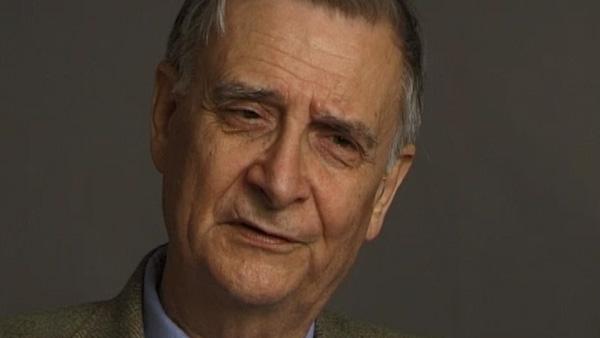NEXT STORY

Discovering ant colonies
RELATED STORIES

NEXT STORY

Discovering ant colonies
RELATED STORIES


|
Views | Duration | |
|---|---|---|---|
| 1. I never grew out of my bug period | 6 | 657 | 05:04 |
| 2. 'If you don't like mathematics, don't give up' | 2 | 839 | 02:59 |
| 3. A grand tour with Thomas Eisner | 1 | 296 | 05:23 |
| 4. Eating a big green katydid | 78 | 02:57 | |
| 5. Discovering ant colonies | 218 | 05:05 | |
| 6. Why I study ants | 362 | 01:09 | |
| 7. The Ants | 249 | 03:05 | |
| 8. Our book receives the Pulitzer Prize | 1 | 231 | 02:18 |
| 9. Fieldwork is exhilarating | 196 | 03:07 | |
| 10. The truly grand experience of my career | 207 | 06:09 |

But, in addition, there was a member of a family of flies known to be bloodsuckers. I can't remember the name of it. They rarely are encountered. But bless my soul they were out in abundance, competing for space on you with the mosquitoes, black flies. Well as I said, I've been in the swamps of New Guinea, I have rode through mangroves in Cuba and the Florida Quays and on and on around the world, but I've never encountered anything quite like that. And it just stuck in my memory.
Well, the other thing I remember very well was one day toward the end of our journey, we were somewhere in the south, maybe it was Mississippi, at one of these roadside stands, engaging in a rare luxury of pulling out one of our last dimes to buy a Coke, you know, each Coca-Cola. We slept by the... everywhere, right on the ground, incidently, by the side of the road, that's how we got around and didn't have to pay any money. But there we were and there was a typical American family with... and Tom and I were busy at... it was at night, it was light, and I was collecting insects. That's how you collect insects, to substantial degree in travelling, you go to lights at night and a lot of these flying insects are collected in. They were collected and for about the hundredth time on our trip one of the small kids in this group, a little boy, came up and he asked me what I was doing. And with his parents listening and so on. And I was sort of tired and irritable.
And there was a big green katydid there. And I knew that katydids were probably very edible, if not palatable. After all, you know, they're closely related to the locust of biblical fame, on which you could live, with honey, which are the secretions of another insect, you know, in the wilderness, in the Sinai. And so I don't know what possessed me but I reached up and took that big green katydid and said, we're collecting these in order to eat them. I chomped down on it, you know, and chewed a little bit and swallowed a little bit and threw the rest of the carcass away. And got the desired, shocked effect and cessation of further questions.
And only later did I realise, I remembered, that these Tettigoniidaen katydids were among the vectors... or the carriers... intermediate hosts of acanthocephalan worms which are a particularly unpleasant intestinal parasite. Fortunately I didn't get any of that in that one reckless gesture of what... of what... rejection of American society for a few seconds anyway.
EO Wilson (1929-2021) was an American biologist, researcher (sociobiology, biodiversity), theorist (consilience, biophilia), naturalist (conservationist) and author (two Pulitzer Prizes). His biological specialty was myrmecology, the study of ants.
Title: Eating a big green katydid
Listeners: Christopher Sykes
Christopher Sykes is a London-based television producer and director who has made a number of documentary films for BBC TV, Channel 4 and PBS.
Tags: Sinai, New Guinea
Duration: 2 minutes, 57 seconds
Date story recorded: 2000
Date story went live: 22 May 2018